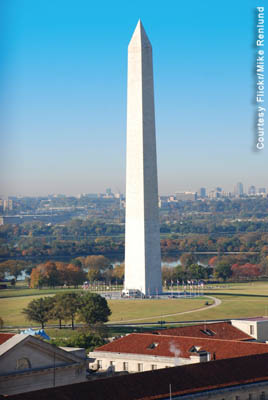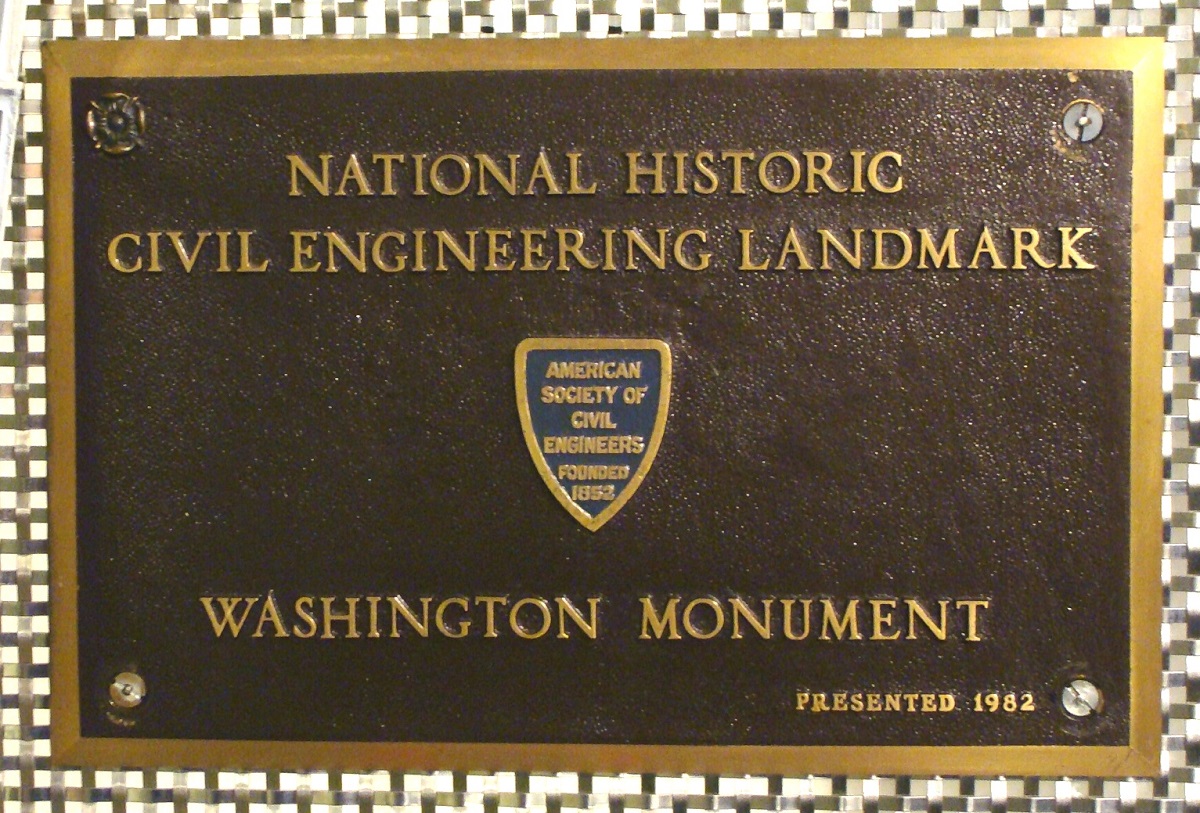Washington Monument
38 53 22.1 N
77 02 06.9 W

"The Washington Monument stands not only as one of the most stupendous works of man, but also, as one of the most beautiful creations of humanity. It is at once so great and so simple that it seems to be almost a work of nature."
U.S. Senate proceedings on the McMillan Plan for the monument grounds, 1902
Upon its dedication in 1885, the Washington Monument was the tallest structure in the world. Begun in 1848 to honor George Washington, the structure wasn't completed for over 36 years. Construction and financing problems slowed progress and the Civil War halted it completely.
In 1876, after construction had resumed, chief engineer Lt. Colonel Thomas Lincoln Casey determined that the base was too shallow and narrow to support the weight of the planned monument. (At that point, the in-progress monument already stood over 176 feet.) Under Casey's direction, the earth below the foundation was replaced with concrete, as was the original rubblestone base.
The monument is topped by a 55-foot pyramidion that begins at the 500-foot level. It weighs 336 tons and is covered with 262 marble slabs, each seven inches thick. Special machinery, platforms, and derricks were designed to build and assemble the massive top, which took six months of labor to complete.
Facts
- The monument is 555 feet tall and is modeled after an Egyptian obelisk. An obelisk is a tapering, four-sided stone structure where the height is 10 times the width of the base.
- Beginning at the 452-foot level, walls are entirely marble.
- The slim silhouette is just over 55 feet square at the base and narrows to just under 40 feet at the top of the shaft, 500 feet above the ground.
- The weight of the completed obelisk was so well distributed that it can withstand winds up to 145 miles per hour. A 30-mph wind causes a sway of just 0.125 inch at the peak.

Resource
- Thomas B. Allen, The Washington Monument: It Stands for All , New York: Discovery Books, 2000.

